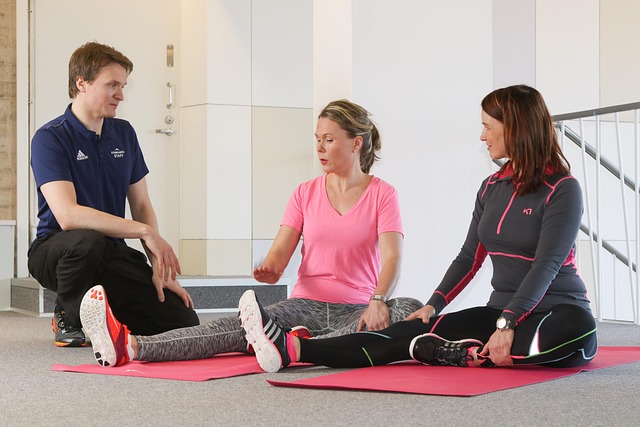Anger control therapy is a holistic approach that tackles anger from its root causes using evidence-based techniques like CBT, mindfulness, and relaxation exercises. The goal isn't suppression but transformation, enhancing mental well-being and relationships. Key steps include identifying triggers through journaling, mindfulness practices for early recognition of anger, cognitive behavioral strategies to reshape negative thoughts, deep breathing exercises for calming the body, progressive muscle relaxation to release tension, visualization for peaceful escape, regular physical activity as an energy redirector, and building a strong support system.
Anger is a powerful emotion that, if left unmanaged, can lead to detrimental outcomes. Discover effective relaxation strategies to gain control over your anger with this comprehensive guide. We explore a range of techniques from cognitive behavioral therapies to physical activities, helping you understand and manage anger effectively. By identifying triggers, practicing mindfulness, and utilizing evidence-based practices like progressive muscle relaxation and visualization, you can navigate angry situations calmly. Embrace these tools for improved mental well-being and a more balanced life.
Understanding Anger Control Therapy: A Comprehensive Approach

Anger control therapy is a comprehensive approach designed to help individuals understand, manage, and reduce their anger. It’s not just about suppressing emotions but learning healthy ways to express them constructively. This type of therapy delves into the root causes of anger, often tracing them back to early experiences or underlying issues, and provides strategies to navigate these feelings more effectively.
Through various techniques, such as cognitive behavioral therapy (CBT), mindfulness practices, and relaxation exercises, anger control therapy empowers people to recognize triggers, change negative thought patterns, and develop healthier coping mechanisms. The goal is not to eliminate anger but to transform it into a manageable emotion, ensuring better mental health and improved relationships in one’s personal and professional life.
Identifying Triggers: Recognizing Your Anger Catalysts

Identifying your triggers is a crucial step in anger control therapy. Understanding what sets off your anger is the first key to managing it effectively. Triggers can be people, places, situations, or even certain thoughts. By keeping a journal to record these moments when you feel your anger rising, you can start to recognize patterns and identify specific catalysts.
Once you’ve identified your triggers, you can begin to develop strategies for navigating them. This might involve changing your environment, practicing mindfulness techniques to stay grounded in the present moment, or communicating more effectively with people who frequently trigger your anger.
Mindfulness and Meditation Techniques for Calmness

Mindfulness and meditation are powerful tools in the arsenal of anger control therapy. These practices encourage individuals to focus on the present moment, observing their thoughts and feelings without judgment. Through regular practice, one can learn to recognize early signs of anger, allowing them to respond rather than react impulsively.
Meditative techniques, such as deep breathing exercises and guided visualizations, help calm the mind and body. By cultivating a sense of inner peace, individuals can better navigate stressful situations that might trigger anger. Mindfulness meditation, in particular, teaches one to be fully aware of their senses and surroundings, fostering a state of relaxation and emotional balance.
Cognitive Behavioral Strategies: Challenging Angry Thoughts

Cognitive Behavioral Strategies, such as challenging angry thoughts, are a key component of anger control therapy. When faced with anger, it’s common to have automatic negative thoughts that fuel and intensify the emotion. These thoughts can be irrational or distorted, like “Everyone is against me” or “This situation is completely unacceptable.” The goal isn’t to suppress anger but to recognize these thoughts and question their validity. By logically analyzing and challenging these angry thoughts, individuals can gain a more balanced perspective, reducing the intensity of their anger.
Through techniques like cognitive restructuring, people learn to replace negative thought patterns with more realistic and positive ones. This process involves identifying evidence for and against the initial thought, considering alternative explanations, and formulating a more rational belief. By regularly applying these strategies, individuals can improve their ability to manage anger effectively, fostering healthier emotional responses in both daily life and challenging situations.
Deep Breathing Exercises to De-escalate Emotions

Deep breathing exercises are a powerful tool for anyone looking to manage and control their anger effectively. When emotions start to escalate, taking a moment to focus on your breath can help de-escalate the situation. By taking slow, deep breaths, you activate your parasympathetic nervous system, which promotes relaxation and calms down the body’s stress response. This simple yet effective technique helps to break the cycle of anger by distracting your mind from negative thoughts and allowing you to regain control.
Practicing deep breathing regularly as part of an anger control therapy routine can significantly reduce stress levels and improve emotional regulation. It encourages a mindful approach, helping individuals become more aware of their physical reactions to anger. With consistent practice, deep breathing becomes an instinctive response when facing angry situations, providing a healthy coping mechanism for better emotional well-being.
Progressive Muscle Relaxation: Unleashing Physical Tension

Progressive Muscle Relaxation (PMR) is a powerful technique within anger control therapy, focusing on releasing physical tension to calm the mind and body. It involves a systematic process of tensing and then relaxing different muscle groups. By doing so, individuals become more aware of their bodily sensations, learning to identify areas of tension that often accompany angry feelings. This awareness is a crucial step in managing anger effectively.
During PMR, one starts by tensing the muscles for a few seconds, feeling the physical sensation of tightness. Then, slowly releasing the tension allows a sense of relaxation and calmness to take over. This practice can be particularly beneficial as it teaches individuals to recognize and disrupt the connection between physical tension and anger. As a result, when faced with anger-triggering situations, practicing PMR can help reduce the intensity of the emotional response, promoting better anger control.
Visualization and Imagery for Mental Serenity

Visualization and imagery techniques are powerful tools in anger control therapy, offering a peaceful escape from the heat of the moment. By guiding individuals through calming mental scenarios, this strategy helps to reduce stress and regulate emotions. One simple exercise involves picturing a serene place—a quiet beach, a lush forest, or a tranquil garden—and focusing on every detail: the sounds, smells, and sensations. This mindful practice allows one to transport themselves mentally, creating a sense of detachment from the anger-inducing situation.
Engaging in such visualization can help individuals gain perspective, promote relaxation, and foster mental serenity. It teaches the mind to recognize and interrupt angry thoughts, replacing them with peaceful imagery. Regular practice can lead to better emotional regulation, enabling individuals to respond calmly under stress instead of reacting impulsively with anger.
Engaging in Physical Activity for Anger Management

Engaging in regular physical activity is an effective strategy for managing anger. Exercise serves as a powerful tool to help individuals redirect their energy, reduce stress, and improve overall mood. When anger arises, instead of reacting impulsively, consider stepping away from the situation and going for a walk or engaging in any form of physical movement. This simple act can significantly calm the body and mind, allowing for better perspective and decision-making.
Incorporating activities like jogging, swimming, yoga, or even dancing into your routine can be beneficial for anger control therapy. These activities stimulate the release of endorphins, often referred to as ‘feel-good’ hormones, which can counteract stress hormones and promote relaxation. Over time, regular physical activity can strengthen an individual’s ability to manage intense emotions, providing them with a valuable coping mechanism to combat anger in various situations.
Support Systems and Seeking Professional Help

Having a strong support system is crucial for managing anger effectively. Sharing your feelings with trusted friends or family members can provide emotional relief and offer different perspectives on challenging situations. They can serve as a safe space to vent, helping you feel heard and understood. Consider reaching out to loved ones who have successfully managed their anger or those willing to learn alongside you. Support groups, where individuals with similar struggles connect, can also be immensely beneficial. These connections provide peer support and offer valuable techniques for anger control therapy.
When feelings of anger become overwhelming or persistently intense, seeking professional help is a vital step towards managing them healthily. Therapists specializing in anger control therapy can guide individuals through the root causes of their anger and teach practical coping strategies. Through counseling sessions, you can explore healthy ways to express your emotions, improve communication skills, and develop problem-solving abilities. This specialized support enables you to gain insights into your triggers and learn techniques tailored to your specific needs.
